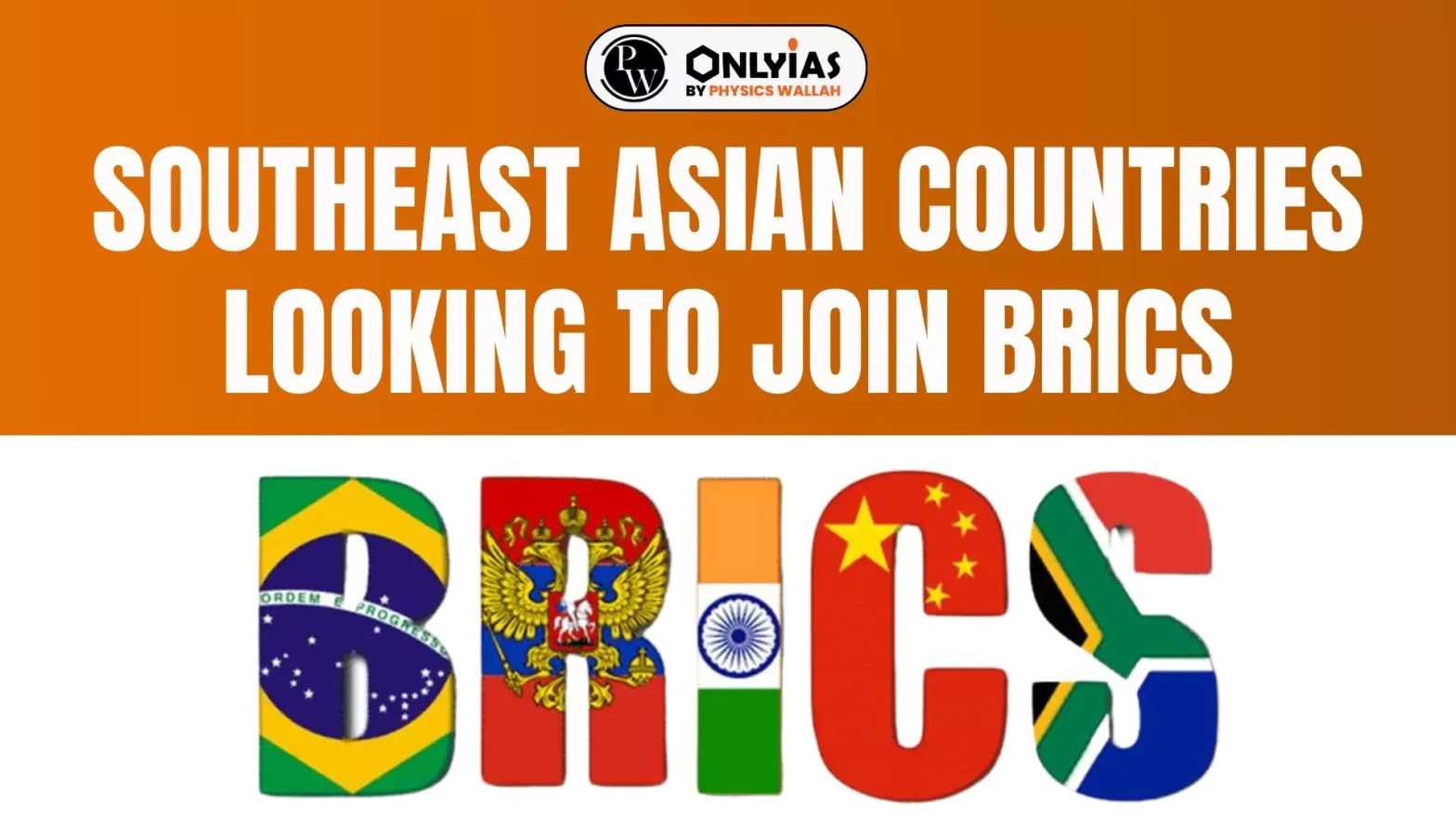BRICS is attracting Southeast Asian countries, with Thailand and Malaysia being the latest to express their interest in joining the bloc.
- The bloc has members from all over the world, but none from Southeast Asia yet.
About BRICS
- Refers: It consists of Brazil, Russia, India, China, and South Africa, was previously known as BRIC before South Africa’s inclusion in 2010.
- Formation: The acronym “BRIC” was first introduced in 2001 by Jim O’Neill, to denote the group of fastest-growing economies that would dominate the world economy by 2050.
- The first BRIC Summit was held in 2009 in Russia.
- BRICS countries are united by their shared economic potential and their desire to play a more prominent role in the global economy.
- They are united by their common challenges, such as poverty, inequality and climate change.
- Goal: To highlight the issues of the global South and to challenge the Western hegemony in the global system.
- Expansion: Last year, BRICS decided to expand its membership, inviting Egypt, Ethiopia, Iran, Saudi Arabia and the United Arab Emirates to join the bloc.
- The name for the expanded group has not yet been officially announced, but it could be called “BRICS+.”
- Other ASEAN Nations: Vietnam, Laos and Cambodia “could be the potential applicants” as they already have good ties with China, India, and Russia — all key players in BRICS.
- In May, Vietnam said that it is closely monitoring the process of BRICS membership expansion.
- Last year, there had been speculation that Indonesia, the only G20 country in Southeast Asia that hopes to complete the accession process with the OECD within three years and could become a BRICS member.
- However, it is still weighing the pros and cons of BRICS membership.
- Significance: Combined, its members account for about 45% of the world’s population — around 3.5 billion people.
- Economic Significance: According to World Bank data, their economies are worth around $30 trillion (€28 trillion) — about 28% of the global economy.
Enroll now for UPSC Online Course
Interest of New Members in Joining BRICS
- New entrants view BRICS as an alternative to global bodies viewed as dominated by the traditional Western powers and hope membership will unlock benefits including development finance, and increased trade and investment.
- Malaysia: The bloc “can help Malaysia’s digital economy grow faster by allowing it to integrate with countries that have strong digital markets and also take advantage of best practices from other members.
- Thailand: The country would also be able to draw investments in important industries including services, manufacturing, and agriculture.
- Apart from BRICS, Thailand has also applied to join the Paris-based Organization for Economic Cooperation and Development (OECD), which has 38 mostly Western members.
- Thailand is doing a balancing act — one foot with the Western liberal democracy and the other foot with the emerging economies.
- People’s Expectations: As per the various analysts, Thailand’s eagerness to join BRICS is based on domestic justification.
- To increase economic growth is their most important foreign policy priority, therefore, joining the regional bloc is relevant to its people’s expectations.
- Participation in new world order: Thailand expects the membership to enhance its participation in international economic policy and to “create a new world order.
Influence of China
- Both these Southeast Asian nations becoming BRICS members “will enhance their relationship with China.
- Influential Trade Ties: Trade ties that Malaysia and Thailand already have with China have influenced their decisions to join BRICS.
- According to official data, China has been Malaysia’s largest trading partner for the past 15 years and Thailand’s biggest for 11 years.
- Favoring Public Sentiments: As per a recent survey by a Singaporean think tank, in Malaysia, public sentiment is currently more in favor of China, the world’s second-largest economy after the United States.
Concerns for India
The expansion of the bloc is raising various challenges for India such as:
- Member countries’ inclination with China and hence will lead to domination of China in the bloc.
- Divergence in investment resources of the bloc.
- Difficulty in decision-making as less resolution would be passed as receiving consent of many members would be difficult and time-consuming.
- Divergence from the original goal of the bloc as it was formed on the basis of emerging economies as now anyone could be its part.
Check Out UPSC CSE Books From PW Store
About Southeast Asian Countries:
- It is composed of eleven countries of impressive diversity in religion, culture and history: Brunei, Burma (Myanmar), Cambodia, Timor-Leste, Indonesia, Laos, Malaysia, the Philippines, Singapore, Thailand and Vietnam.
|
![]() 6 Jul 2024
6 Jul 2024

